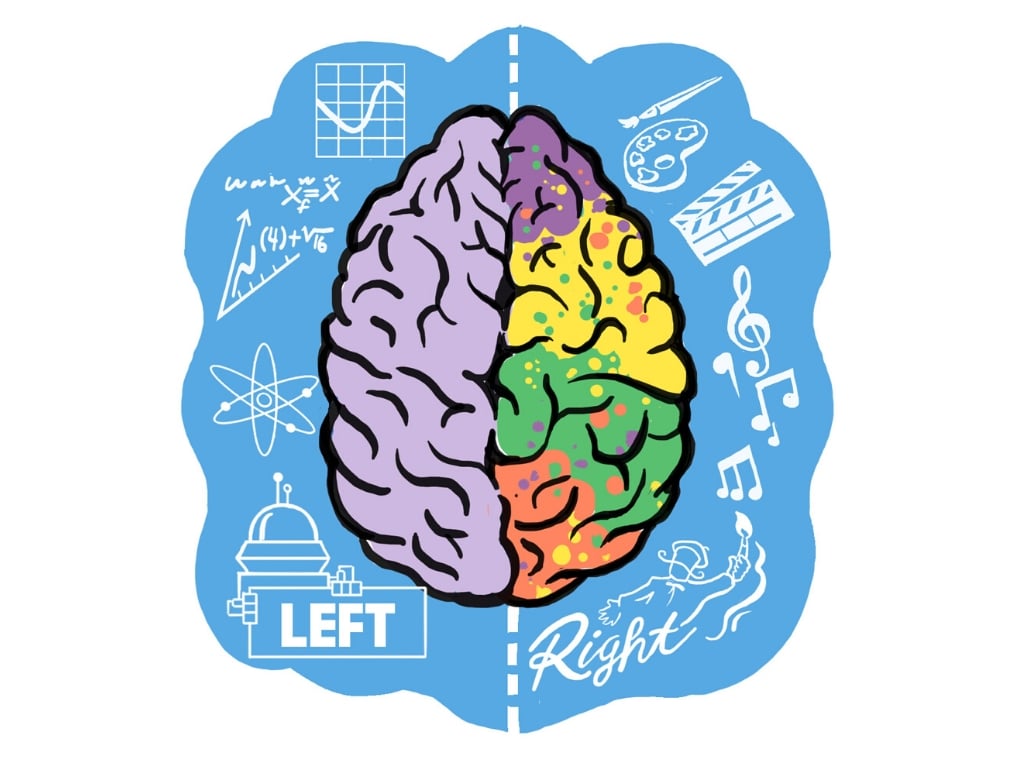“I find it touchingly poetic to think that as our technology grows more advanced, we may grow more human.”
Diane Ackerman, The Human Age
Remember when robots couldn’t walk? I do. Yet, very few of us would be impressed or even scared by a walking robot today, not when we’ve seen one execute a backflip. Remember when the idea of A.I. face recognition would have overwhelmed most? I do. Yet, now, A.I. can generate deep fakes that are so convincing, we’ve built entire corners of the internet dedicated to trying to weed them out. Remember when the idea of A.I. outsmarting us was ludicrous? I certainly do. Yet, now Google DeepMind’s AlphaZero AI has defeated researchers who have dedicated their careers to mastering the game Go.
Technology isn’t just performing impressive party tricks; A.I. is being used across the globe to help protect our futures. Recently, Microsoft pledged $50 million to its “A.I. for Earth” program to help figure out new solutions for climate change using A.I. technology. The technologies we are currently creating are the only way to solve the problems we face.
There’s no doubt that A.I. is getting smarter. Today, we live in a world that would be hard for our grandparents to imagine. Because of the speed of technological progress, some humans are becoming fearful, which is only natural. We are biologically programmed to fear the unknown. The inevitable mass adoption of A.I. raises a lot of questions about the purpose of humans. I believe that the next decade will see A.I. dramatically change the way humans work, but I’m also confident that there is nothing to fear. Actually, I believe it’s quite the opposite…we should be excited about the future A.I. will bring, and how it will allow us to do what we do be: be human.
The 4 Biggest Challenges Facing A.I.
The evolution of A.I. is taking place at an astonishing rate. And while this may mean that certain tasks and even entire jobs and industries will soon be replaced by robots, the human workforce is far from out of a job. In fact, humans are needed now more than ever.
I’ve had the pleasure of sharing a stage with some of the world’s foremost A.I. experts, including Sir Tim Berners-Lee, the inventor of the World Wide Web, and Sophia, the most advanced A.I.-powered robot created to date. And in conversation with these experts, we all agree that there is one area which A.I. will not be replacing anytime soon…
The core human traits of Creativity, Intuition, Curiosity and Imagination
Let’s look at why these traits as so important, and what makes them so hard for machines to replicate:
Creativity
Last Christmas, I purchased a shiny new bike for my nephew. The bike came in a giant cardboard box, which I neatly gift wrapped and placed under the tree
As all children do, come Christmas my nephew tore through the wrapping in seconds, ripped open the box, and took out the bike to examine it in all its glory. Yet moments later, what did he spend the rest of the day playing with? The box! Why? Because it could be anything he wanted it to be. A castle, a rocket ship, a fort, a kitchen.
When was the last time you saw a box and imagined a castle? Probably around the age of 6. Because it’s around this age that we enter the school system and are told for the first of many times that a box is just a box.
We were all born Creative, but then we went to school and then college and got a job and most likely found ourselves being told “you’re not creative” or “leave those ideas to the Creative Team”. And sure enough, over time we end up believing we’re not creative. That the “creative” humans work in the “creative” departments and teams.
But here’s the thing, Creativity is not just the ability to draw or paint or play music. It’s the ability to think Creatively and solve problems. A skill that – within the disruption of the next decade – will become one of the most highly sought in the world. And a skill that has been buried within all of us since childhood, just waiting to be woken up again.
Intuition
Have you ever caught yourself staring across the room at someone you found attractive, only to have them immediately turn around and stare back at you so quickly that you had to avert your gaze and pretend you were looking elsewhere? How did they know you were looking at them? It’s the same reason you can “feel” that the car in the next lane is about to swerve in front of you even though their turn signal isn’t on – Intuition. A built-in survival engine hard-wired into all of us.
Did you know that you have more than one brain? The outer brain – most recently developed through evolution – controls our logic and reason and planning skills. The types of things needed to build advanced tools like self-driving cars and A.I. But then there is the inner “reptilian” brain. The brain that’s been there since humans first arrived over 200,000 years ago. This is the brain responsible for those “gut” feelings. Your intuition. The fight or flight response. And while our new, outer brain is much more capable of making sound, responsible decisions, more often than not it’s our inner reptilian brain that’s driving the ship.
In fact, the brain has 100 billion neurons. Our gut, 100 million neurons. This inner brain behind our gut feelings is so important, that it comprises over 70 billion neurons. Our outer brain? A mere 16 billion neurons.
Think about the decisions you make every day. The dress you chose to wear, the place you chose to go on holiday, the house you bought. These were not rational decisions made by your outer brain; they are irrational decisions you made with your inner brain. You were just “going with your gut” as most of us do all day, every day.
Now think about the choices consumers make thousands of times a day. When it comes to your company’s product or service, sure they may make some rational calculations and analyses, but at a certain point, someone, somewhere in the decision-making process is likely going with their “gut feeling”.
While our rational outer brain allows us to synthesize all the big quantitative data in front of us to find core insights, our inner, intuitive brain allows us to take all that data, match it up with our qualitative findings, and take the leap towards action. And it’s this symbiotic relationship between our inner and outer brains that make humans uniquely capable of uncovering massive innovation…a skill that will be incredibly difficult for machines to replicate.
Curiosity
What is the most common question your children ask?
Why? Why? and Why Again?
“Why” is how we all learn. But education and corporate life teach us that there is only one right answer, so much so that we stop looking for the second answer. This eventually leads most of us to stop asking why, and to just iterate rather than innovate. Albert Einstein once said, “I am not particularly clever, I am just innately curious.” Think of all the inventions that have been discovered because their inventor simply refused to take the first answer for granted, and continued to ask “Why?”
More often than not, it’s the fourth or fifth “Why” that gets you to the real insight. Ask why people go to Disneyland and most will tell you they go for the rides. Dig a little deeper and eventually, you’ll discover that it’s not actually about the rides at all. It’s about family time together, traditions, nostalgia and building memories.
If you were tasked with driving more visits to Disney Parks, this discovery would allow you to focus not on costly ride infrastructure development, but on a new PR and Marketing campaign promoting family nostalgia and traditions at the park. A massive swing, all by allowing your curiosity to ask “Why?”
Imagination
In addition to his insights on curiosity, Albert Einstein also saw the significance of imagination, saying: “Imagination is more important than knowledge.”
Time and time again, this insight has been proven. When President Kennedy said “We choose to put a man on the moon before the end of the decade” he didn’t have the slightest idea as to how it would be achieved. Had he possessed a robust knowledge of space travel at the time, he might not have actually given this iconic speech, choosing instead to believe that a moon landing was impossible. But he led with his imagination, and believed that the U.S. possessed the people, resources, and willpower to achieve this audacious goal. And he was right. In fact, his declaration was so profound that it gave birth to the phrase “Moonshot Thinking.”
While many of us may believe we aren’t all that imaginative, we still catch ourselves daydreaming from time to time. We all have those incredible, lucid dreams every now and then. There is a place inside our heads where we go, beyond our conscious brand, and let our imagination run wild. And it’s in this place where our best ideas live too. We just have to find them.
We won’t lose human jobs. We will simply change them.
Read any article related to A.I., and you’ll inevitably come across stats highlighting how many jobs are being replaced by robots. I even spoke at a recent conference where fellow speaker Nicholas Thompson, Editor in Chief of Wired, discussed how he believes that by 2030, 20% of all current occupations will be replaced by A.I.
Scary stuff, right? Well, it’s not as dire as you might think.
While these forecasts may in fact come to fruition, it doesn’t mean A.I. and humans can’t be friends. In fact, we should be excited about what A.I. is going to do for our futures, and the benefits we’ll experience by learning to collaborate with Artificial Intelligence. Because when used correctly, A.I. can actually free us up to spend more of our time leveraging our four core human strengths, allowing us to do our best work, and creating new jobs in the process.
Ford is one company that is actively experimenting with the collaboration of humans and machines. Since 2010, their steady introduction of co-bots has led to 16% year-on-year growth. They’re not the only car manufacturer collaborating with A.I. in this way, both Mercedes-Benz and General Motors have invested heavily and use co-bots to work with their human workforce.
“Using collaborative robots to do some of the more mundane, simple, heavy-exertion tasks…allows them to use more of their creativity and their minds to take us to the next level,” explains Bruce Hettle of Ford.
It’s time to embrace a world in which we are no longer responsible for mundane tasks, and instead, delegate that labor to intelligent machines that will do the work without getting bored and distracted. All the while, freeing up our minds to be more creative and more strategic.
“Forty percent of us used to know how to milk cows, but now less than 1% do. We all used to tell elevator operators which floor we wanted, and now we press buttons. Most of us now drive cars and trucks and trains, but that’s on the verge of being over. A.I.s are most likely not going to kill jobs. They will handle parts of jobs, enhancing the productivity of their humans,’ says Matt Mason, in a recent study from Pew Research.
We are at the dawn of a decade where our core human traits will become more useful than ever before. In a world where we will be able to program robots to do almost anything for us, things like imagination and creativity will become an extraordinary advantage.
The rise of robots will only make us more human
Rather than fearing AI, we need to ask ourselves, “How might we use our core human traits to build an incredible relationship with this brave new world?” We must lean into our Creativity, Intuition, Curiosity and Imagination.
As the ranks of robots swell, as data and Artificial Intelligence combine to achieve extraordinary things, now more than ever is the time to be human.
“We need to realize that technology is not just about efficiency; it’s about taking these new capabilities that we have and doing more with them. When you do that, you actually increase employment,” says Tim O’Reilly, the founder of tech publishing giant O’Reilly Media.
So instead of fearing A.I., how might we leverage both our uniquely human assets and the inevitable advances in technology to build a better tomorrow together? We may not have the answers yet, but with a little curiosity, creativity and innovation, I’m sure we will figure it out. Fearing A.I. won’t make it any easier to adapt. It’s better by far, to embrace it inevitably and look for ways to use time previously spent on mundane tasks, to reshape our jobs and our futures.







